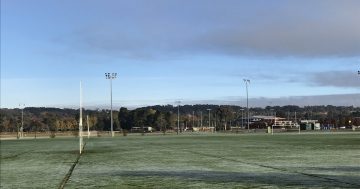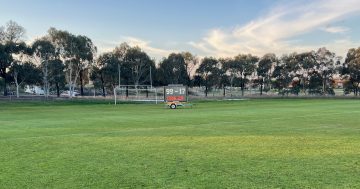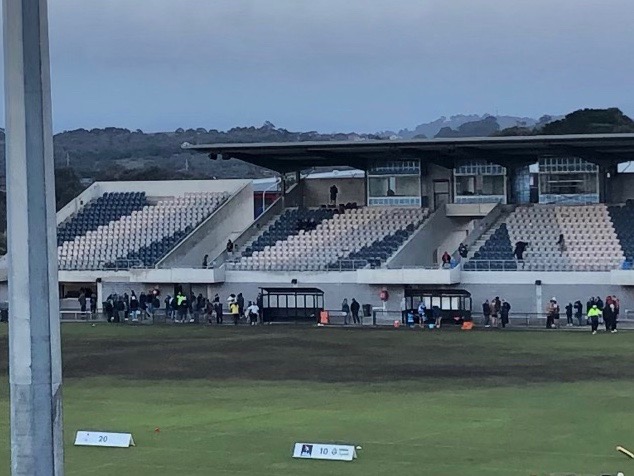
Gungahlin Enclosed Oval … it can get a little muddy. Photo: Supplied.
A vibrant and somewhat passionate discussion is taking place in the Canberra sporting community in the wake of the constant closure of sports grounds following a winter of rainfall.
Many struggle to understand why sports grounds are being closed so regularly because of rain, impacting training and playing.
There are many questions constantly arising from these conversations: what is the rationale behind closing sports grounds? Is it a safety issue for those taking part, or is the major concern potential damage to grounds? Are all sports grounds the same? If not, why are they all closed at the same time?
Shouldn’t we let kids experience what it’s like to play in the rain, in the mud?
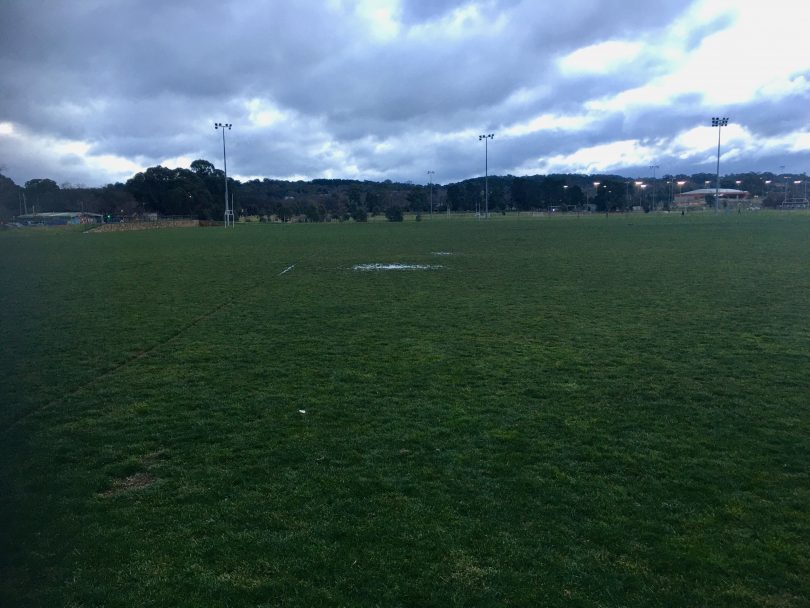
Southwell Park. Photo: Tim Gavel.
Having spoken to many involved in junior sport in Canberra, it appears as though frustration emanates from a combination of issues.
I have no idea whether there are more injuries in boggy, wet conditions, but we do live in a litigious society prepared to take legal action in situations such as unsafe sports grounds. So there is a certain amount of understanding in terms of this consideration, particularly if there is good data substantiating closures due to safety concerns.
Another consideration is the damage created to the playing surface through activities such as rugby league and rugby union when the ground is saturated.
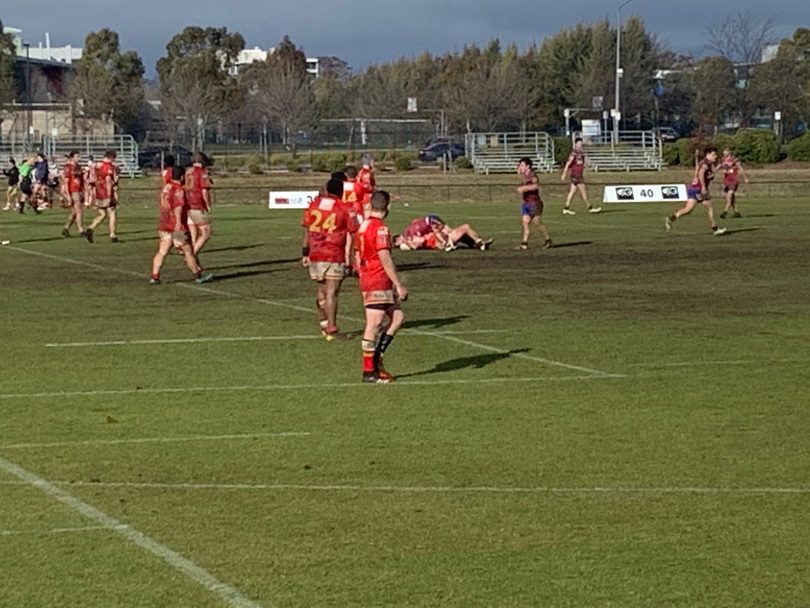
Rugby union training at Gungahlin Enclosed Oval. Photo: Tim Gavel.
If you ever need evidence of the impact of play on a soggy playing surface, look no further than the state of the Gungahlin Enclosed Oval, which was opened in 2014 at a cost of $12 million (I’m not sure how much was spent on drainage).
The facility has four tenants comprising Gungahlin teams in AFL, soccer, rugby union and rugby league.
Because of the state of the playing surface, it’s impossible to play soccer there at the moment. As such, Gungahlin United won’t be playing at this ground for the rest of the season.
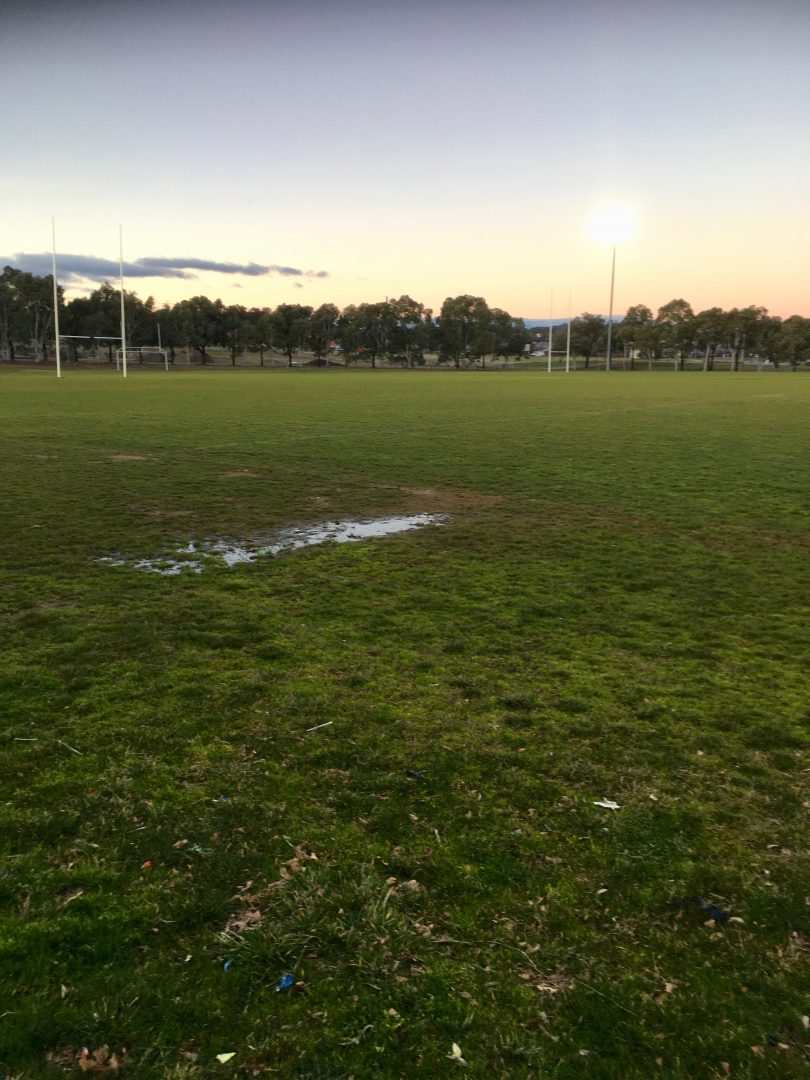
Nicholls Enclosed Oval is used by the Gungahlin Eagles. Photo: Tim Gavel.
The Gungahlin Eagles, a club that I am currently involved with, play their home games at Nicholls Enclosed Oval, which has been significantly impacted by wet weather this season.
The Eagles have presented a petition to the ACT Government calling for funding for improvements such as drainage as the facility is used by a number of sports juniors and seniors year-round.
The solution would appear to be simple.
Money needs to be spent on drainage to make the playing fields usable during wet periods. It should be a priority.
The demand for Canberra’s sporting facilities has never been greater. We can ill afford to have grounds across the ACT continually closed because of wet weather. This season of high rainfall will happen again (and again), so surely we should look to future-proof our facilities so they can be used as intended.












